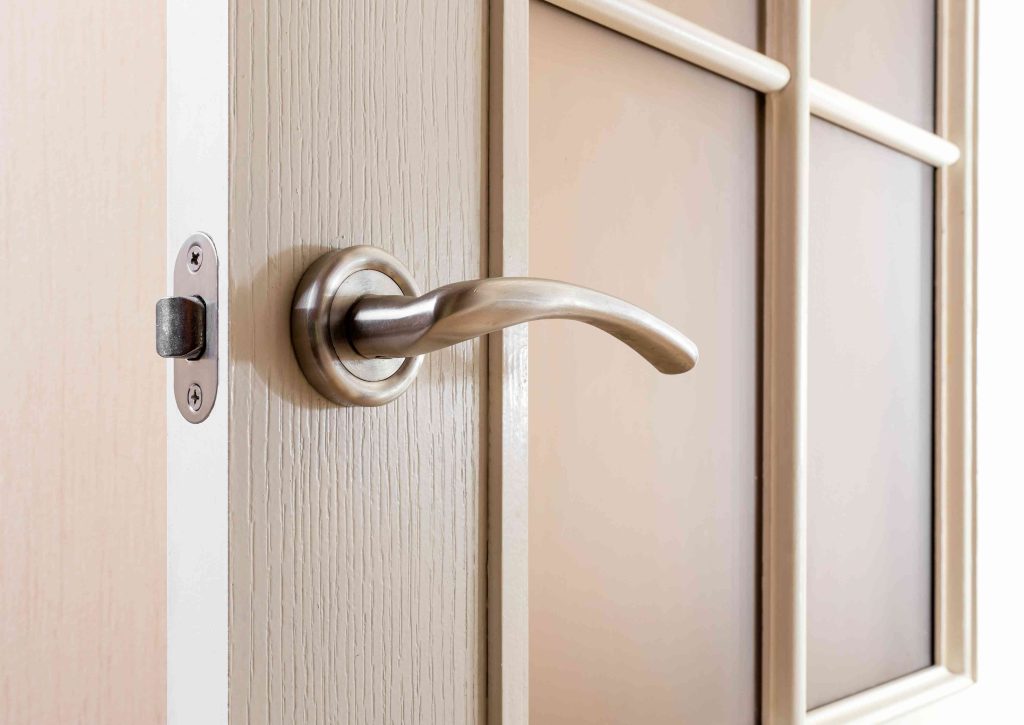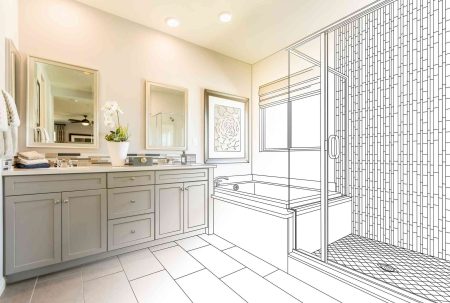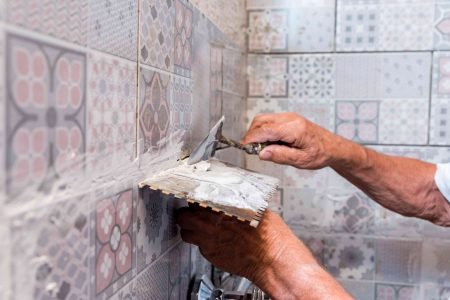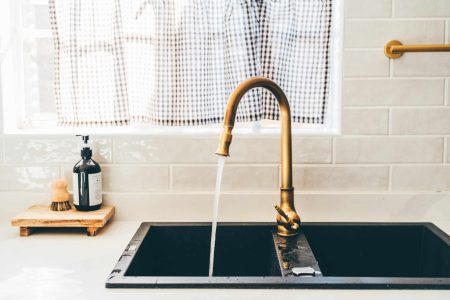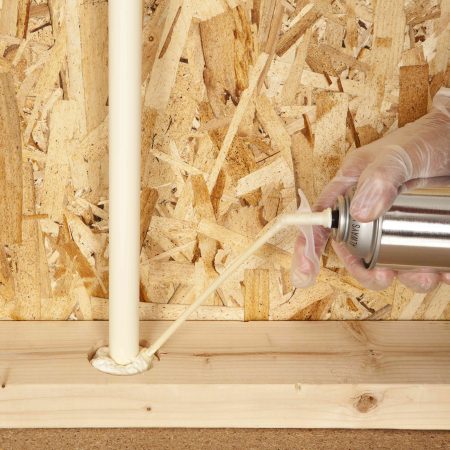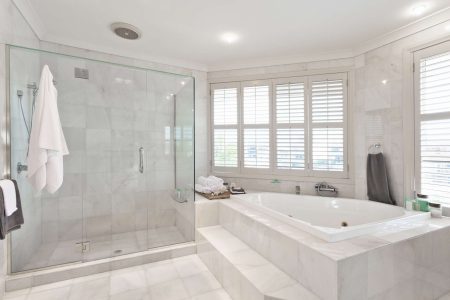When comparing similar metallic finishes like satin nickel vs brushed nickel, learning the subtle differences before purchasing can make or break your home’s aesthetic. Beyond appearance, learning the differences in durability, cost, and maintenance will help you choose the best metal fixtures for your home.
Below, we’ve revealed the key differences between satin nickel and brushed nickel, laid out their advantages and disadvantages, and provided our recommendation on which is best for your home.
What Is Satin Nickel?
Satin nickel is a nickel plating finish with a smooth texture and a soft luster. While it’s available in many color and finish iterations, it generally has a warm silver color that works well with many different home decor styles but shines in a modern setting.
Satin nickel is commonly used for faucets, doorknobs, cabinet hardware, lighting fixtures, and more.
What Is Brushed Nickel?
Brushed nickel is a nickel plating finish with a matte, brushed texture. While its color is similar to that of satin nickel, its brushed finish is rougher to the touch than satin, lending a visual that works well with a more rustic style.
However, brushed nickel maintains an elegant look that can blend with many interior design styles. Brushed nickel is often used for appliance handles, faucets, door hardware, and more.
Satin Nickel vs. Brushed Nickel: What’s the Difference?
Many brands and designers use “satin nickel” and “brushed nickel” interchangeably without understanding that the two types of nickel finish have key attributes that distinguish them from one another and make each work better in certain design scenarios
Here’s the difference between satin nickel and brushed nickel:
Appearance
Satin nickel is smoother than brushed nickel. Just like copper and brass have different visual impacts, it goes without saying that the differences in the appearance of satin nickel and brushed nickel will have different visual effects in the space in which they’re installed.
Satin Nickel
Satin nickel has a smooth finish that’s slightly glossier than brushed nickel. While it’s not exactly matte, it’s not as shiny as other metallic finishes like chrome. Its sheen and appearance are comparable to stainless steel.
Its subtle luster gives it a soft, warm color that blends with nearly any decor style but shines in a modern setting.
Brushed Nickel
Brushed nickel has a textured finish created by a wire that resembles brushed stainless steel. The brushed appearance is highly noticeable compared to satin nickel’s smooth texture. While its soft, warm color is very close to that of satin nickel, it has a duller sheen that allows it to blend better in a rustic decor setting.
Durability
Brushed nickel is more durable than satin nickel. The durability difference between satin nickel and brushed nickel isn’t always of much consequence, depending on the use of the fixture in question. For instance, a nickel finish on a ceiling light requires much less durability than a kitchen faucet or doorknob, as it won’t be regularly touched.
Satin Nickel
Satin nickel is fairly durable and can take regular use, but it may wear slightly faster than brushed nickel. Satin nickel resists corrosion and tarnishing.
Brushed Nickel
Similar to satin nickel, brushed nickel is also resistant to corrosion and tarnishing. While it will also eventually show wear and tear from regular use, brushed nickel’s textured finish hides wear marks and scratches better than satin nickel.
Costs
Satin nickel is typically more expensive than brushed nickel. While the cost difference between satin nickel and brushed nickel isn’t major, the savings can add up depending on the number of fixtures you’re shopping for whether it’s doorknobs or cabinet hardware.
Satin Nickel
Satin nickel has a higher average cost than brushed nickel because the process of achieving the smooth satin finish is more involved than the process of creating the textured finish of brushed nickel and utilizes chemicals, which add to the cost. While satin nickel is considered by some to be a premium finish, its cost is low compared to pricey metal finishes like brass, copper, and bronze.
Brushed Nickel
Brushed nickel is generally more affordable than satin nickel because the process of creating the brushed finish is simpler and therefore less labor intensive. Plus, brushed nickel doesn’t require the use of chemicals to create the finish, cutting the cost further.
Maintenance
Satin nickel is easier to clean than brushed nickel. Unlike brass hardware, which requires frequent cleaning and polishing, both satin and brushed nickel are prized for being low-maintenance, easy-to-clean metal finishes. However, there is still a difference in the maintenance level between these two popular types of nickel finishes.
Satin Nickel
Satin nickel, like most smooth metal surfaces, is easier to clean than brushed nickel. Most daily grime can be wiped away with a damp cloth, though a mild soap can be employed to tackle tougher messes.
Brushed Nickel
While brushed nickel will hide damage, fingerprints, and water spots better than satin nickel, it is harder to clean than satin nickel because of its textured finish.
Color Ranges and Finishes
While you may think that satin nickel and brushed nickel are limited to their most common color iterations, there are several specific color and finish options that fall within the categories of satin nickel and brushed nickel.
Satin Nickel
Satin nickel is available in several color ranges and finishes, with offerings suitable for many different decor styles. Here are some popular satin nickel finishes:
- Polished Satin Nickel: Polished satin nickel is standard satin nickel that’s been polished to give it a higher sheen.
- PVD Satin Nickel: PVD stands for “physical vapor deposition,” which is a certain process of giving nickel a satin finish. PVD satin nickel finish has a higher level of corrosion and tarnish resistance than traditional satin nickel.
- Antique Satin Nickel: Antique satin nickel has an antiqued look created by a reaction to a chemical solution.
Brushed Nickel
Like satin nickel, brushed nickel is offered in many different finishes, each tailored toward a different aesthetic. Here are some common types of brushed nickel:
- Polished Brushed Nickel: Polished brushed nickel is standard brushed nickel that has been polished to have a higher sheen.
- Antique Brushed Nickel: Antique brushed nickel is standard brushed nickel that has been treated with a chemical agent to create an antiqued patina.
- Matte Brushed Nickel: Matte brushed nickel is standard brushed nickel that hasn’t been further polished, maintaining a matte appearance.
Which One Is Right for You?
So, is satin nickel or brushed nickel better? Neither satin nickel nor brushed nickel is better across the board. Instead, each type of nickel finish has its advantages and disadvantages.
In most home uses, the most crucial determining factor is the appearance, as both satin nickel and brushed nickel are relatively durable and easy to maintain. If your home leans more modern in appearance, satin nickel will likely fit in more seamlessly. If your home leans more rustic or industrial style, brushed nickel will be right at home.
Additionally, the cost difference between the two popular types of nickel is marginal and won’t make a major difference in your budget, unless you need several fixtures.
Read the full article here







